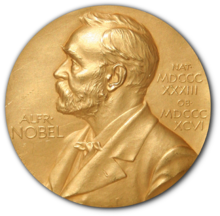 We wish all our readers a good start into the year 2012! We hope that you find the insight you have been looking for, get the job you want or the grant you need. May it be a delightful year for you.
We wish all our readers a good start into the year 2012! We hope that you find the insight you have been looking for, get the job you want or the grant you need. May it be a delightful year for you.I'll use the opportunity to dump a few interesting links I've come across lately:
- I enjoyed very much the NYT technology future timeline, where readers have proposed upcoming innovations and guessed when they would become reality.
In 2014 for example, "Scott Aaronson predicts, scientific publishing will move away from the current journal-and-conference model to a model that takes better advantage of online tools." I have now tried three times with different groups of colleages to make use of an online wiki or at least Google docs to avoid sending emails with updates and files or links around. I have failed three times, afaics for no reason other than that it was apparently too much of a new thing to try. Taking into account that physics is allegedly quick with adapting new tools, I think Scott is off by at least a decade. Scientific publishing will move when more than half of all tenured faculty will have been born past 1980.
In 2015 "Voting by phone" is on the timeline. Given that in Sweden you can make your tax reimbursement by phone (yes, I did!), and text messages are about to replace stamps, I wouldn't be surprised if the Swedes will be the first to make this reality.
Should mankind still exist in 2100, NYT readers believe that "physical sciences produce abundance so great that wealth becomes meaningless as a difference between people" and we'll be living in a post-scarcity world. This estimate seems to be ignoring reality. My personal estimate would be some thousand years later, maybe even longer, and that only under the condition that progress continues sufficiently long for us to find a sustainable way to meet our energy requirements. - Something entirely different, a while ago I went to a workshop under the COST initiative "Black Holes in a violent Universe." This initiative has now produced a video with a brief introduction about what different types of black holes there are. I could have lived without a reminder of the earth-swallowing tiny black holes, but besides that it's a nice summary. (Thanks to Xavier for the link!)
- Mount Everest has now a webcam.
- A few months ago, I wrote a post about citation-loops that can be created by citing Wikipedia without noting the date of retrieval. xkcd dubbed this process citogenesis.
- And finally some good news: The budget of the German ministry for education and research (BMBF) will raise in 2012 by 11% to a total of 12.9 billion Euro.






